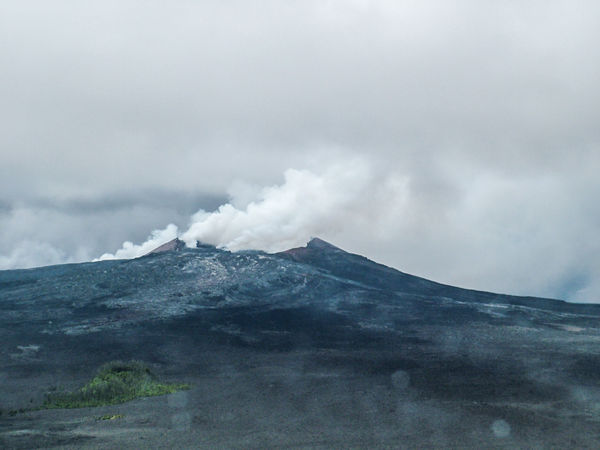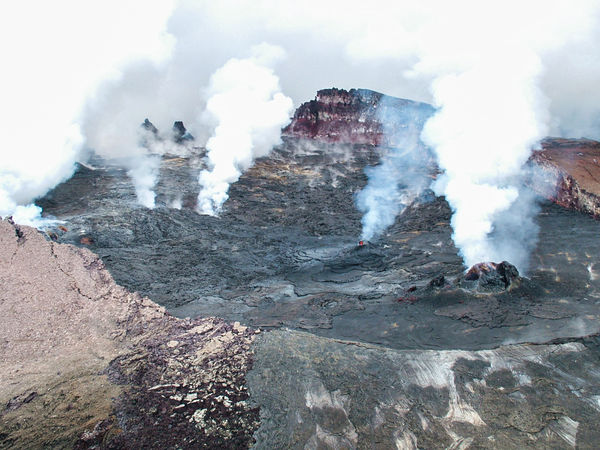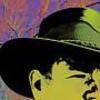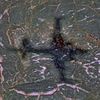Going to Hawaii have rented a helicopter want to photograph the volcano.
Jun 12, 2012 19:10:38 #
Hi Hogs Would appreciate any suggestions that you might have on shooting the Volcano from a helicopter. This is the Doors off helicopter so that will help I am sure wanted the evening flight but my time will be at 2:30 PM. I am wondering if I should use my 80-400 f4 to 5.6 or maybe my 70-200 will be fine as it is a 2.8. I am also going to have my 14-24 2.8 lens with me. This is the only time I will ever have to do this and as I have never taken photos from a helicopter need all the help I can find.
Thank you to any Hogs that respond to my Question.
Thank you to any Hogs that respond to my Question.
Jun 12, 2012 20:03:16 #
I am no expert but , if I personally, could only take one lens it would be the 80-400. That should capture everything you would need. As far as settings, well, there will be a lot of movement. Set according to that be sure VR is on. And WEAR THE CAMERA STRAP!
Jun 12, 2012 20:18:24 #
Based on my experience about 15 years ago, They are going to weigh everyone and be concerned about balancing out the chopper. I don't know where you will sit. It's possible, you may sit in the back and in the middle. You may want to call and ask about that.
I think I remember the pilot telling me that they have to fly a minimum of 500 feet above the ground. Could be different today.
I don't know what the volcano current activity is. If it is fairly quiet, you may fly right over it and see red lava.
When you are closer to being over it, you will probably loose dimension or sense of elevation.
The chopper pilot may be of help for pausing to the photo moment.
Hopefully, the pilot will take you out to the coast where the lava falls into the water. You may get to see some lava tube windows. You even got to see lava flow on the surface.
If the pilot is able to fly right over the volcano, he/she will probably fly in a tight clockwise turn for all on that side to see down. After a few turns, will go the other way. Very easy to get motion sickness. Take the medicine ahead of time.
The pilot will probably make sure everyone knows where the barf bags.....I'm sorry. Where the "Aloha" (barf) bags are located in case you need one.
You might get to see lava flow on the ground.
As far as which lens, I would take two smaller ones. If they all fit in the bag, take them all.
While you are in paradise, don't leave anything in view in the car. It may not be there when you get back.......
Also, be sure your camera bag is secured in the chopper.
Please post images when you get back!!!
I'm sure others will jump in with more/better info.
Pat
I think I remember the pilot telling me that they have to fly a minimum of 500 feet above the ground. Could be different today.
I don't know what the volcano current activity is. If it is fairly quiet, you may fly right over it and see red lava.
When you are closer to being over it, you will probably loose dimension or sense of elevation.
The chopper pilot may be of help for pausing to the photo moment.
Hopefully, the pilot will take you out to the coast where the lava falls into the water. You may get to see some lava tube windows. You even got to see lava flow on the surface.
If the pilot is able to fly right over the volcano, he/she will probably fly in a tight clockwise turn for all on that side to see down. After a few turns, will go the other way. Very easy to get motion sickness. Take the medicine ahead of time.
The pilot will probably make sure everyone knows where the barf bags.....I'm sorry. Where the "Aloha" (barf) bags are located in case you need one.
You might get to see lava flow on the ground.
As far as which lens, I would take two smaller ones. If they all fit in the bag, take them all.
While you are in paradise, don't leave anything in view in the car. It may not be there when you get back.......
Also, be sure your camera bag is secured in the chopper.
Please post images when you get back!!!
I'm sure others will jump in with more/better info.
Pat
Jun 12, 2012 20:21:45 #
Think you should take me with you to hold you in while you are hanging out photographing the volcano!!!!!! Ha.
Jun 13, 2012 05:59:42 #
If I were shooting from a helicopter, I would bring the two smaller lenses. 200mm should get you as close as you need and the wide angle will get the rest. I don't know if Kilauea is still very active although it has been releasing lava for about 20 years. Eruptions are not guaranteed or planned. LOL. Maybe the helicopter will go out over the ocean and you can get some shots of hot lava hitting the cold ocean - steam and lots of it. If you are taking off from the Hilo side of the Island, you may be able to get some shots of Mauna Loa and Mauna Kea with the sun behind them. Enjoy and Aloha.
Jun 13, 2012 08:19:43 #
RMB wrote:
Hi Hogs Would appreciate any suggestions that you... (show quote)
He will be getting you pretty close to the volcano, so a huge lens will not be necessary. If you zoom way in to smoke or lava, you wil lose the perspective of the whole volcano scene. All you will get is a shot of smoke or a red glow. Of course, if you want a close-up of something, then a longer lens would help. I think a 400mm lens in a vibrating chopper would be a bit tough to hold steady.
I did a plane tour and a week later rode the helicopter. I remember that I preferred the plane, but I don't remember exactly why. The shots below were taken with a Fujifilm S7000 in 2004, from a small plane.


Jun 13, 2012 10:12:53 #
Jay Pat wrote:
Based on my experience about 15 years ago, They ar... (show quote)
I agree with Jay Pat. There won't be a lot of room in the copter.Volcano was pretty active three months ago, so you might not get too close. Trades are blowing this time of the year so you may be flying in from the East...just depends.
Jun 13, 2012 10:53:43 #
Aside from all of the great advice offerd about equipment, here's a more subtle tip to get better images from a helicopter shoot. Wear black or dark colored clothing. The plexiglass windows are concave to the passengers. White or light colors will relfect off of the glass and show up in your pictures. However, it you fly with the door removed it's not a problem unless you elect not to wear your safety belts. It's a long way down and you don't want to wreck your cameras.
Jun 13, 2012 10:55:37 #
Turn off IS (useless from a helicopter). Shoot at high shutter speeds.
Jun 13, 2012 11:15:29 #
RMB...You've got two great lenses, money to go to Hawaii and more to rent a helicopter. Spend a little more to rent a second camera for this once in a lifetime photo op. You don't want to worry about switching lenses while you're flying around the volcano. Your 14-24 and your 70-200 (we are talking Nikon, aren't we?) will be all you'll need. The 70-200 is sharp enough that you'll be able to crop if needed. Be sure to think ahead about the conditions and what settings you'll use. Try to use a fairly fast speed but also an aperture about f8-f11 if possible.
Jun 13, 2012 11:30:41 #
KAYE wrote:
Aside from all of the great advice offerd about equipment, here's a more subtle tip to get better images from a helicopter shoot. Wear black or dark colored clothing. The plexiglass windows are concave to the passengers. White or light colors will relfect off of the glass and show up in your pictures. However, it you fly with the door removed it's not a problem unless you elect not to wear your safety belts. It's a long way down and you don't want to wreck your cameras.
Thinking about the "no doors". If you sit in the front, the door opening could be more to your side.
If you sit in the back, you could have a better view to the side and maybe, better forward "angled" view than sitting in the front.
Of course front seat allows you to look out forward and get more glare.
You can always ask for the best place to sit for best views to take images. Which can be different than just looking out and enjoying view only, with no camera.
More to think about. (Plotting and planning).
I did suffer motion sickness, not enough to need the Aloha bag. Almost.....
Bring motion pills/patch!!
Can't wait to see the images!!!
Pat
Jun 13, 2012 11:55:28 #
Something else nobody thinks of. When you photograph anything from an airplane, you're moving and sequential pictures will be offset. Any two makes a stereo pair (if the helecopter is not hovering or moving slowly). I use StereoPhoto Maker to compose stereo images from my field area on my website (they're not easy to find, yet).
Jun 13, 2012 12:11:57 #
Jay Pat wrote:
Based on my experience about 15 years ago, They ar... (show quote)
The best position to take photos from a chopper is sitting on the floor, in the door way, with your feet firmly planted on the skid. That's the way we did it in Nam, when we had to get the best possible photos.
Also, you had better be a lot higher than 500 feet of the rim of the volcano because the lava shoots that high at times.
Jun 13, 2012 13:53:27 #
Thank-you for all the suggestions. Steve R good idea was going to leave my d300 at home and just use the D3s. I weighed my camera bag and with all my lens and camera's it was 38 pounds and West Jet says 22 lbs is the maximum weight for carry ons. As it is all insured so more gear in suitcase with the tripod and less clothes LOL.
Jun 13, 2012 17:33:22 #
The first thing I would do is look for recommendations from the company you are going to charter from. I assume they have done it for a while. The difference between an airplane and a helicopter for most of the photo trips is the window, Open or Closed! I would not shoot slower than 250 with a helicopter. Their brochure should give some clue to the proximity to the best subjects expected to be seen. Don't forget to look above the viewfinder. Your photos should remind you of the view your brain has stored for you too!
If you want to reply, then register here. Registration is free and your account is created instantly, so you can post right away.









